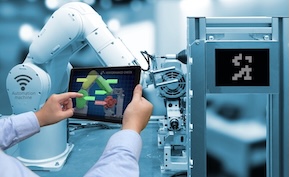Business Intelligence
Breaking the Silos: Integrating ERP, CRM, and Field Apps into One Real-Time View

Enterprise silos remain one of the most persistent barriers to productivity and insight. Data trapped in ERP, CRM, and field applications prevents leaders from seeing the full picture—creating blind spots in forecasting, customer experience, and operations. By integrating these systems into a unified, real-time dashboard, businesses gain seamless visibility from the field to finance, transforming how they plan, execute, and grow.
The challenge: disconnected business systems
ERP, CRM, and field apps were designed to optimize specific domains—finance, sales, and operations—but rarely to communicate with one another. The result is fragmented data, duplicated processes, and decision delays. Without integration, CFOs, COOs, and field managers all operate from different realities.
- ERP: Controls accounting, procurement, and inventory but lacks customer context.
- CRM: Manages customer relationships yet doesn’t reflect fulfillment or cost data.
- Field apps: Track service delivery and operations but remain isolated from finance and sales insights.
The solution: a unified, cloud-native data layer
Cloud-native integration connects ERP, CRM, and field data into one ecosystem through APIs, middleware, and data fabrics. Once unified, this data fuels real-time dashboards that show a complete business snapshot—sales orders, customer interactions, cash flow, and field performance—all in one place.
- APIs & Middleware: Tools like MuleSoft, Workato, or Boomi synchronize data across SaaS systems.
- Event streaming: Kafka, AWS Kinesis, or Azure Event Grid enable real-time data exchange.
- Unified dashboards: Platforms like Power BI, Looker, or Tableau visualize connected insights instantly.
Business impact of integration
- 360° visibility: View every transaction, customer, and operation in real time.
- Faster decisions: Reduce lag between activity and analysis across departments.
- Improved accuracy: Eliminate double-entry errors and outdated reports.
- Enhanced collaboration: Finance, sales, and service teams share common KPIs.
- Predictive insight: Machine learning can identify bottlenecks and forecast demand.
Example use case: field-to-finance visibility
Imagine a service organization where technicians record site data on mobile apps. As soon as a job closes, data syncs through APIs to both CRM (for customer updates) and ERP (for invoicing). Finance sees live billing projections, operations track technician efficiency, and management monitors revenue in real time—all on one integrated dashboard.
Key technologies enabling integration
- Integration Platforms as a Service (iPaaS): Workato, Zapier for Enterprises, and Boomi handle API orchestration and workflow automation.
- Data Fabrics: Denodo or Talend unify distributed data sources for analytics.
- Cloud-native Data Warehouses: Snowflake, Databricks, and BigQuery centralize all data for live query access.
- AI-powered Connectors: Tools like Microsoft Copilot or Salesforce MuleSoft AI automate mapping and sync setup.
Integration architecture overview
- Identify systems: Map all ERP, CRM, and field applications in use.
- Define key data flows: Determine how transactions, orders, and metrics move between systems.
- Implement real-time connectors: Deploy APIs or event-driven integrations for continuous sync.
- Unify the analytics layer: Route all integrated data to a central BI or cloud data warehouse.
- Visualize insights: Create cross-departmental dashboards showing shared metrics and performance.
Benefits by department
- Finance: Gain immediate visibility into revenue, expenses, and margins tied to field performance.
- Sales: Access order status, fulfillment progress, and payment data within CRM.
- Operations: Monitor service delivery times, resource utilization, and inventory in real time.
- Customer Success: Provide proactive support with a unified view of every customer’s lifecycle.
KPIs to measure integration success
- Data latency: Average delay between transaction and dashboard visibility.
- Reconciliation time: Hours saved in cross-system data matching.
- User adoption: Percentage of teams actively using the unified dashboard.
- Decision lead time: Reduction in time between data availability and action.
- Error rate: Decrease in data discrepancies across systems.
FAQs
Why is ERP-CRM integration important? It eliminates data silos and enables end-to-end visibility across sales, operations, and finance for better collaboration and faster decision-making.
How do cloud dashboards support integration? They visualize unified data from multiple systems in real time, providing actionable insights for all departments.
What tools can integrate ERP and CRM? Popular solutions include MuleSoft, Boomi, Workato, Zapier, and Denodo for API and data integration.
Can small businesses benefit from integration? Yes—modern cloud iPaaS tools make real-time integration affordable and scalable for SMBs.
Bottom line
Breaking the silos between ERP, CRM, and field apps creates a foundation for intelligent, data-driven operations. When these systems operate as one, organizations unlock faster decision-making, better collaboration, and complete visibility from customer to cash.






